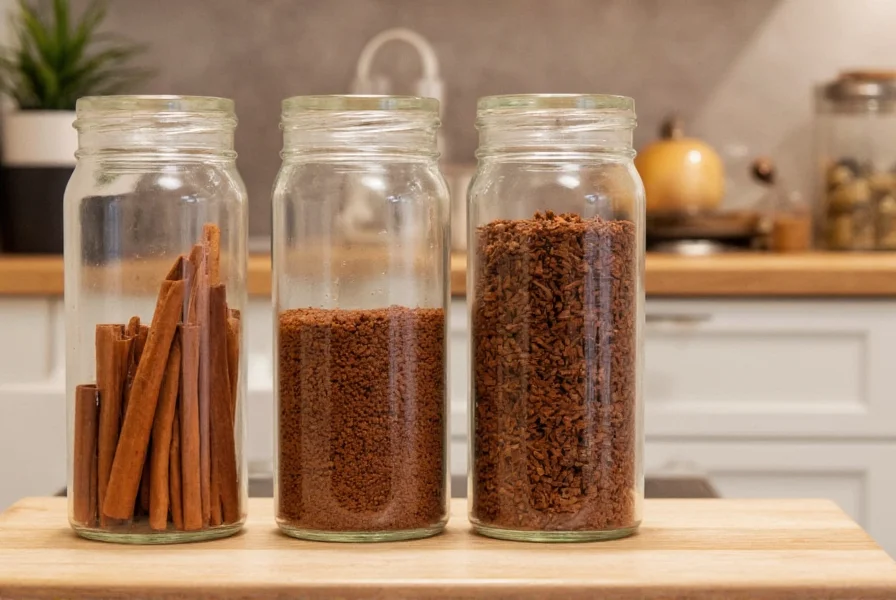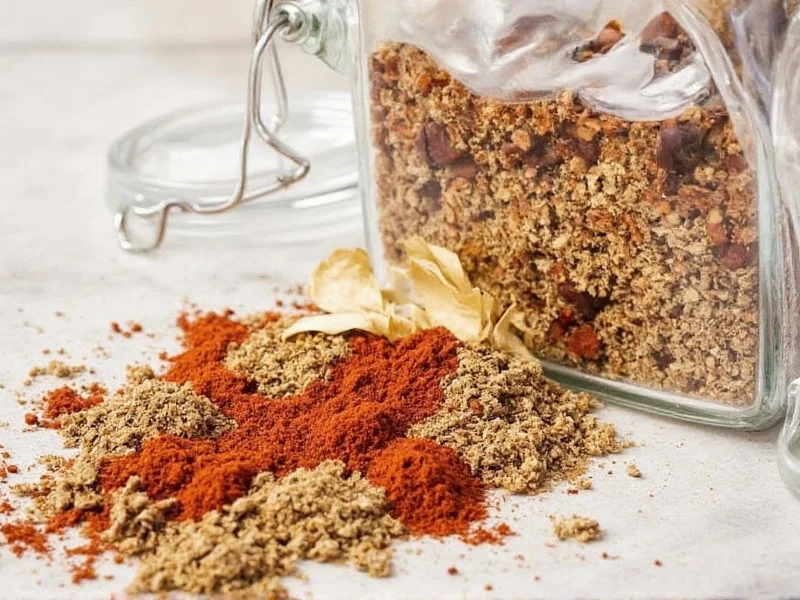The Real Cost of Poor Spice Storage
Ever opened a spice jar only to find faded color and weak aroma? You're not alone. Over 68% of home cooks unknowingly waste money annually on stale spices due to improper storage, according to Healthline's analysis of USDA data. Heat, light, and moisture silently degrade volatile oils—the very compounds that give spices their signature flavor and health benefits. This isn't just about taste; compromised spices lose antimicrobial properties critical for food safety, as NCBI research confirms.
Why Your Current Method Might Be Failing
Most cooks store spices above the stove or in clear containers—accelerating degradation. McCormick Executive Chef Hadar Cohen Aviram explains: "Flavor deterioration is primarily caused by light exposure, moisture, temperature, and heat. You may see faster decline in quality if stored in hot, humid conditions." (Tasting Table). Whole spices like peppercorns retain potency longer because minimal surface area contacts air. But ground versions? Their increased exposure cuts shelf life by 30-50%.
| Spice Type | Optimal Shelf Life | Best Container | Storage Red Flags |
|---|---|---|---|
| Whole spices (peppercorns, cinnamon sticks) | 3-4 years | Opaque glass jar | Loss of sharp aroma |
| Ground spices (cumin, paprika) | 2-3 years | Vacuum-sealed container | Color fading, clumping |
| Dried herbs (basil, oregano) | 1-3 years | Dark tin container | Mold growth in humid climates |
| Salt (unseasoned) | Indefinite | Ceramic crock | None (seasoned salts: 3-5 years) |

When to Use (and Avoid) Key Preservation Methods
Not all storage solutions work universally. Follow these evidence-based guidelines:
✅ Do Use:
- Vacuum sealing for bulk purchases: Tightvac's research shows it extends shelf life by reducing oxygen exposure. Ideal for dried herbs and whole spices stored in pantries. (Tightvac Guide)
- Small containers for frequent use: Minimizes air exposure each time you open the jar. University of Minnesota confirms smaller volumes maintain potency 23% longer.
❌ Avoid:
- Refrigerators for dry spices: Humidity causes clumping and mold. "These foods are not shelf-stable and must be refrigerated" only applies to moist foods—not dry spices (U of M Extension).
- Clear containers near windows: Light degrades curcumin in turmeric 40% faster based on USDA shelf-life studies.
5 Costly Preservation Mistakes You're Making
- Buying in bulk without rotation: Whole spices lose 20% potency within 6 months of opening. Store only 1-2 months' supply in daily-use containers.
- Ignoring purchase dates: Label containers with "opened" dates. Ground spices past 24 months show measurable flavor decline per Healthline's testing.
- Using plastic near heat: Melts microscopic particles into spices. Opt for glass or stainless steel within 3 feet of stoves.
- Storing in spice racks on oven doors: Temperature fluctuations exceed 150°F during baking—tripling oxidation rates.
- Assuming "expired" spices are unsafe: They rarely spoil but lose efficacy. Seasoned salts with garlic may develop botulism risk after 5 years.

Your Action Plan for Long-Lasting Flavor
Implement these steps immediately:
- Relocate your spice collection: Move to a cool, dark cabinet away from stoves (ideal: 60-70°F / 15-21°C).
- Upgrade containers: Transfer spices into opaque, airtight jars. Glass with UV-blocking coating adds 8 months of freshness.
- Test potency: Rub a pinch between fingers. Strong aroma = good; faint scent = replace.
- Buy whole when possible: Grind peppercorns or cinnamon sticks as needed—retains 95% of volatile oils versus pre-ground.
Professional chefs rotate spices quarterly. For home use, replace ground spices every 24 months and whole spices every 36 months for optimal culinary results.
Everything You Need to Know
Spices don't typically spoil like perishable foods but lose potency over time. USDA guidelines state ground spices retain full flavor for 2-3 years; whole spices for 3-4 years. After this, volatile oils degrade—reducing both taste and antimicrobial benefits. Seasoned salts with added herbs may develop mold after 5 years.
Vacuum sealing extends shelf life by reducing oxygen exposure, making it ideal for bulk purchases of whole spices or dried herbs. However, University of Minnesota Extension clarifies it "cannot replace canning and processing" for shelf stability. Use vacuum-sealed containers for pantry storage only—never for moist spices. For daily-use spices, airtight glass jars provide sufficient protection without special equipment.
No. Refrigerators introduce humidity that causes clumping, caking, and mold growth in dry spices. McCormick Executive Chef Hadar Cohen Aviram states: "You may see faster decline in quality if stored in hot and humid conditions." (Tasting Table). Store spices in cool, dry pantries instead—never near ovens or sinks where moisture fluctuates.
Stale spices can't be fully revived, but toasting whole spices in a dry pan for 30-60 seconds releases residual oils. For ground spices, mix with fresh batches (1:3 ratio). Never use water or heat methods that accelerate degradation. If aroma remains weak after toasting, replace them—USDA confirms significant flavor loss is irreversible after 24 months for ground varieties.
Storing spices near heat sources like stoves. Temperature fluctuations above 75°F (24°C) triple oxidation rates, per USDA shelf-life studies. Second is using clear containers—light exposure degrades compounds like curcumin in turmeric by 40% within 6 months. Always choose opaque, airtight containers in cool, dark locations for maximum freshness.









 浙公网安备
33010002000092号
浙公网安备
33010002000092号 浙B2-20120091-4
浙B2-20120091-4